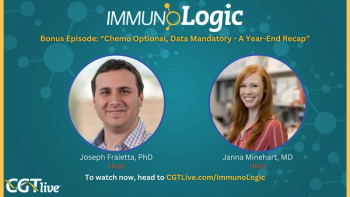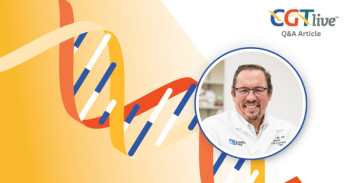
TIL Therapy Demonstrates Durable Efficacy and Manageable Safety in Heavily Pretreated Advanced Melanoma
The data included an IRC-assessed ORR of 31.4%.
Iovance Biotherapeutics’ lifileucel (LN-144), an investigational autologous tumor infiltrating lymphocyte (TIL) therapy, showed encouraging efficacy and a manageable safety profile in pooled data from 2 cohorts of patients with heavily pretreated advanced melanoma in the phase 2 C-144-01 (NCT02360579) clinical trial which were presented at the
The data included an independent review committee (IRC)-assessed objective response rate (ORR) of 31.4%, with 9 complete responses and 39 partial responses. At a median followup of 36.5 months, the median duration of response (DOR) was not reached, and 41.7% of responding patients had a DOR of 24 months or more. The median overall survival (OS) was 13.9 months and the 12-month OS rate was 54% (95% CI: 45.6%, 61.6%).
“[Responses to lifileucel were observed] across all subgroups analyzed, including BRAF mutational status and PDL-1 tumor proportion score,” Amod A. Sarnaik, MD, FACS, Moffitt Cancer Center, said in his presentation of the data. “Some of target lesion diameters above the median and elevated lactate dehydrogenase (LDH), both known negative prognostic factors, were each independently correlated with a lower response. Patients with some of target lesion diameters below the median and a normal LDH had a greater likelihood of response than those with either or both of these adverse factors being higher. This suggests that the earlier use of lifileucel in disease progression may provide a greater benefit for patients.”
In terms of safety, all patients experienced at least 1 treatment-emergent adverse event (TEAE) and 94.9% of patients experiencedat least a single grade 3 or grade 4 TEAE. The most common non-hematologic AEs were chills, pyrexia, febrile neutropenia, hypophosphatemia, hypotension, fatigue, and diarrhea. Most TEAEs were transient and consistent with expectations regarding lymphodepletion and IL-2 dosing. Within the first 2 weeks following lifileucel administration, the incidence of TEAEs reduced rapidly, which Sarnaik highlighted as a benefit of the treatment not requiring multiple cycles.
The multicenter study consists of 4 cohorts and is the largest ever study of a
“While 39 of the 48 responders achieved a response at the time of the very first disease assessment at 6 weeks, many responses deepened over time, with some late best response conversions,” Sarnaik said during the presentation. “For example, 7 who were initially a partial response improved to a complete response, and 10 improved from stable disease to partial response. Notably, there were 2 conversions to complete response that occurred more than 2 years after lifileucel infusion without any additional treatment.”
REFERENCE
Sarnaik A.789 Lifileucel TIL cell monotherapy in patients with advanced melanoma after progression on immune checkpoint inhibitors (ICI) and targeted therapy: Pooled analysis of consecutive cohorts (C-144-01 study). Presented at: Society for Immunotherapy of Cancer’s (SITC) 37th Annual Meeting November 8-12, 2022; Boston, Massachusetts.
Newsletter
Stay at the forefront of cutting-edge science with CGT—your direct line to expert insights, breakthrough data, and real-time coverage of the latest advancements in cell and gene therapy.





































